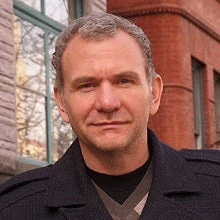One of the twin goals of the World Bank, as well as SDG 1.1, is to reduce extreme poverty by 2030. Measures of absolute poverty, such as poverty at the US$1.90, US$3.20 and the US$5.50 international poverty lines, have the advantage of remaining fixed (in constant dollars), allowing one to measure poverty against the same benchmark over time and across countries. However, when countries set their own national poverty lines, they typically increase the real value of these lines as their economies evolve. This increase in the value of poverty lines reflects in part that the definition of basic needs changes as economies grow. Essentially, the ability to participate in society is costlier in richer countries. The European Union uses 60% of median income to capture the share of the population that is at risk of poverty. SDG 10.2.1 tracks the proportion of the population below 50% of median income.
In 2018, the World Bank introduced a Societal Poverty Line (SPL), based on the background work by Dean Jolliffe and Espen Prydz (Jolliffe and Prydz [2019]), to capture these relative aspect of poverty and to respond to recommendation 16 of the Atkinson’s Commission on Global Poverty, which had called for the Bank to report a measure that combined fixed and relative elements of poverty (also see Chapter 3 in Poverty and Shared Prosperity 2018). The SPL is a hybrid line, combining the US$1.90-a-day absolute poverty line with a relative component that increases as median consumption or income in an economy rises. The SPL increases directly with the level of income in a country (at least over its relative portion) and is thus relevant even in high-income economies, where extreme poverty rates are very close to zero. It varies across countries and within countries over time. Formally, it is defined as 
The recently published Poverty and Shared Prosperity Report 2020 shows the latest estimates for global and regional societal poverty. The global average SPL, expressed in constant 2011 dollars (revised 2011 PPPs), is US$7.20 in 2017, increasing from US$6.90 in 2015. Given that the SPL increases with median income, it is not surprising that the average value of the line is much higher than the IPL and that societal poverty has declined at a slower pace than extreme poverty (see figure 1). The divergence (shown more clearly in this version of Figure 1) is partly driven by countries graduating from the absolute to the relative portion of the SPL. For example, China’s SPL was equal to $1.90 until the mid-1990s and only started to diverge strongly in the 2000s, which is when the divergence is becoming more pronounced globally. In 2017, there were still 2 billion people living below their countries’ respective SPLs. But even at the SPL, poverty continues to fall with 14 million fewer poor people in 2015 than 2017.
Figure 1 Global poverty at the International Poverty Line vs. Societal Poverty Line
Because societal poverty grows as median income increases, the geographical distribution of the societal poor is very different from that measured by the US$1.90, US$3.20 and US$5.50 lines (see figure 2). In fact, while Sub-Saharan Africa and South Asia account for almost 90% of the extreme poor and more than two thirds of the poor at the higher absolute lines, they only account for half of the societal poor. Not surprisingly, the richer regions (for example, Europe and Central Asia or other high-income economies falling in the rest of the world category) account for a larger share of global poverty using the SPL than when compared with these measures of absolute poverty.
Figure 2 Distribution of the global poor by poverty measure, 2017
Although there are differences in the levels of societal poverty across regions, the trends look similar to those seen for extreme poverty. While societal poverty is highest in Sub-Saharan Africa and has stagnated there over the past decade, the gap with other regions is much narrower by this measure compared with what is observed for extreme poverty, largely because other regions have higher poverty rates according to the SPL, which by construction is higher in richer countries and regions. Europe and Central Asia shows one of the lowest values at about 17%. In the high-income economies included in the rest of the world category, 15% of the population lives below an SPL of about US$24 a day. Societal poverty is on the rise in the Middle East and North Africa, consistent with the increase in extreme poverty in the region. East Asia and Pacific shows the largest progress in societal poverty reduction, while Latin America and the Caribbean has stagnated.
We gratefully acknowledge financial support from the UK government through the Data and Evidence for Tackling Extreme Poverty (DEEP) Research Programme.




Join the Conversation